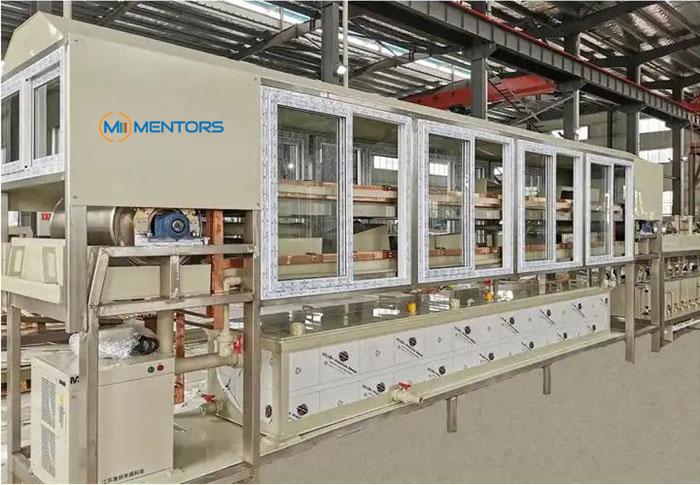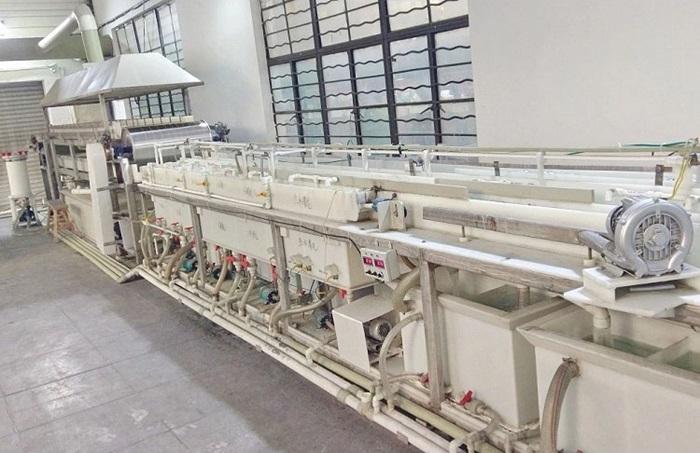The main process of Silver Electroplating Copper Wire is as follow: alkali washing → hot water rinsing → acid washing → copper recovery → hot water rinsing → pre-plating → silver plating → hot water rinsing and drying.

1. Pre-plating
All the processes before Silver Electroplating Copper Wire are called pretreatment. Its purpose is to smooth the surface of the workpiece, remove grease, copper particles, copper oxides or other metal oxides from the surface of the copper wire.
1.1 Degreasing
1.1.1 The degreasing methods for silver-plated copper wires are divided into chemical degreasing and electrochemical degreasing.
1.1.2 Chemical degreasing utilizes the saponification and emulsification effects of alkaline washing solutions on oils to remove saponified oils, and the emulsification effect of surfactants to remove non-saponified oils.
1.1.3 In the production process of silver-plated copper wire, alkali washing solution is usually used to remove oil. The solution temperature of the alkali washing solution should be 40℃ to 70℃, which is more appropriate.
1.2 Pickling
1.2.1 Electrochemical pickling is generally adopted. The main function is to remove copper particles, copper oxides or other metal oxides on the surface of the wire.
1.2.2 However, the copper wire used for silver plating is usually oxygen-free copper, so during the pickling process, the corrosion of the copper substrate itself during the electrolysis process should be avoided.
1.2.3 Therefore, the pickling current intensity should not exceed 1A/d.
1.3 Pre-plating
1.3.1 When the copper wire comes into contact with the silver electrolyte in the positive plating bath, the copper will undergo a displacement reaction with the silver ions in the electrolyte.
1.3.2 The copper is transformed into copper ions and enters the solution, while the silver ions gain electrons and precipitate from the solution on the copper wire.

2. Silver plating
2.1 The forward plating solution is generally prepared with potassium cyanide and silver cyanide.
2.2 The concentration relationship between potassium cyanide and silver cyanide is usually between 1:1 and 1.5:1.
2.3 The cyanide concentration in the forward plating solution can be adjusted according to the current intensity on the surface of the copper wire and the electroplating time during the forward plating process.
2.4 In the bright silver plating and fast and efficient silver plating processes, the positive plating solution is generally of high concentration.
2.5 When the volume of the positive plating tank is large, the copper wire can be rewound in the front and rear guide wheels of the positive plating tank.
2.6 After rewinding, the reaction time of the copper wire passing through the forward plating bath is prolonged, which can increase the production speed, but the quality of the coating may be affected.
3. Post-processing
3.1 After the electroplating of the silver-plated copper wire is completed, the residual solution on the surface of the silver-plated copper wire must be removed.
3.2 This process can refer to the method of the rinsing process in the electroplating pretreatment and use multi-stage deionized water rinsing to ensure that the cyanide residue on the silver-plated copper wire is thoroughly cleaned.
3.3 After washing, the silver-plated copper wire must be dried, and the drying temperature can be controlled between 80℃ and 100℃.
The above process guarantees a consistent Silver Electroplating Copper Wire and stable performance, meeting the requirements for high-quality applications.For more information, please click here.
NOTE:All rights reserved, Reprinting is prohibited without permission.
